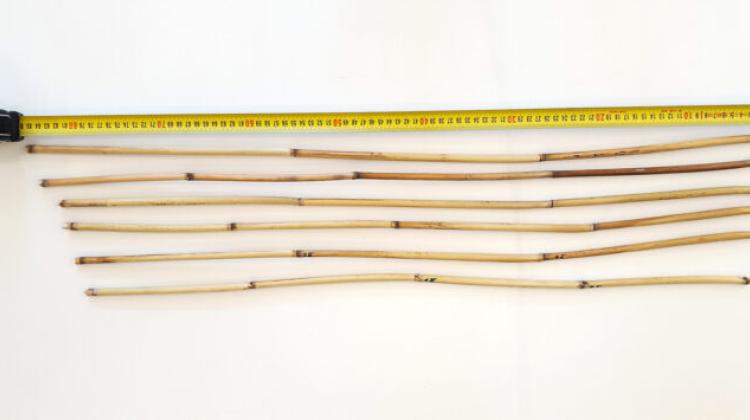I. Dadej: The first women in Polish universities were assigned lower or less prestigious roles
 Photo: Fotolia
Photo: Fotolia
The first women in universities were assigned lower, administrative or less prestigious roles. That does not mean that their contribution, work and commitment were smaller, says Dr. Iwona Dadej, a historian from the Polish Academy of Sciences. 100 years ago, on November 28, 1918, Józef Piłsudski issued a decree on electoral law, in which active and passive suffrage was granted to women.
PAP: What were the possibilities for studying for women before 1918?
Dr. Iwona Dadej: Before 1918 the possibilities were varied, albeit negligible: due to the lack of a unified system of higher education, the lack of agreement of Galician Polish universities in Krakow and Lviv to women taking up regular studies, the lack of schools preparing girls for the matriculation exam and a number of other factors, the decision to study abroad was difficult and required a lot of civil courage in opposing social "opinions" and common patterns.
Therefore, this academic migration from Polish lands was a peculiar phenomenon that should be thoroughly researched. We should also remember female students - pioneers heading to foreign universities. These girls were quite "heretical" in their deviation from social norms, requirements, prohibitions and ideas about the role of women. And they still were sufficiently determined to realize their dreams of university studies! If that`s not courage, then I do not know what is.
PAP: Which universities did they chose?
Dr. Iwona Dadej: Students from the Kingdom of Poland or from Galicia usually went to Switzerland, France, Belgium and Russia, less often to Germany. In fact, they travelled to places with strong communities of Polish students, and often one woman gave an example to many others. They were the most numerous in Zurich, Geneva and Lausanne, the names such as Anna Tomaszewicz-Dobrska, Zofia Daszyńska-Golińska, and Gabriela Balicka were beneficiaries of the Swiss higher education system.
On the other hand, the Skłodowska sisters, Warsaw`s first woman-lawyer Janina Podgórska, and Warsaw social activist Romana Pachucka received education at French (mainly Parisian) universities. In the Brussels scientific community, Józefa Joteyko was an active, creative power. St. Petersburg Higher Scientific Courses for Women attracted, among others, the first woman-attorney of the Second Polish Republic Helena Kononowicz-Wiewiórska and Stanisława Adamowiczowa, an expert in the field of epidemiology and public health.
PAP: What was the formal procedure for university admission of women?
Dr. Iwona Dadej: When we are talking about studying, we sometimes forget that it requires intellectual background, not to mention the matriculation certificate. At the end of the 19th century, there were no high schools for girls, so they could not pass matriculation exams. The only way was to prepare for extramural examinations at male gymnasiums, which was possible with great determination.
But some universities would make things easier for women-students (and not just the Polish women). For example, the University of Zurich recognized "patents", certificates issued by girl schools. It also recognized certificates from the residents of Warsaw that they attended lectures of the Flying University, certificates of finishing schools for girls, etc.
In general, Russian, German and Polish women in the 1870s, 1880s and later in the nineteenth and early twentieth century could study without a matriculation certificate (either as regular students or as auditors), making up for matriculation during the course studies. These are complicated processes, also legally, which must be thoroughly analysed in historical research. But, like I said: it was possible - with great will and determination, without officially having a matriculation or high school certificate - to receive a PhD in philosophy, medicine, and very rarely in law.
PAP: And what was the social perception of these women-students?
Dr. Iwona Dadej: Extremely diverse: from dislike, lack of trust, defamation, to gestures of support and solidarity. On the one hand, we have the already mentioned strict norms and social supervision over women, and on the other hand, a single young woman who wants to go abroad to the university. After all, this way she would deprive the family and the environment of the ability to control all, really all, spheres of her life.
In fact, the aspirations of young women were usually treated as whims. And some colleagues from the "university bench" were not too gallant either. They would send letters to the newspapers back in their home country, describing how unreasonably or immorally women students behaved. I was wondering recently, together with an acclaimed Swiss historian, about Stanisław Krupski`s motives for writing a libel against for Zurich women-students (whose embodiment was Anna Tomaszewicz-Dobrska, the first woman-physician in Warsaw). The historian was sure that such defamatory and depreciating enunciations were caused by the fear that these few women - medical students - would be better than him. And they were. Krupski landed somewhere on the borders of Switzerland as a local doctor, and Tomaszewicz-Dobrska, despite many difficulties, settled and practiced in Warsaw.
Women students themselves and observers of their lives left many documents, memoirs and literature, in which this whole very diverse range of attitudes can be found. These testimonies of German, Russian, Polish female students, partly published one hundred years ago, partly known only from manuscripts or archives to a handful of researchers, are a fascinating description of the university world and the confrontation of the old order with the new one.
Finally, I would also add that the language and fine arts followed the social and cultural changes. The Polish word "studentka" (feminine form of the word "student") was quickly created, as were "Studentin" in German or "étudiante" in French. And in Russian, the phenomenon was "kursistka", a participant of higher education courses for women. The figures of female students have thus entered the collective imagination of societies, literature and painting. I am thinking about the 1880 painting "Kursistka" by Nikolai Jaroszenko, or Maria Dąbrowska`s depiction of the Lausanne student colony in her historical novel Noce i dnie (Nights and Days). These are just the better known examples. The representations of the first generation of women students in the arts and collective memory are today the topics of doctorates and habilitations in almost all of Europe.
PAP: Did many girls go to foreign universities?
Dr. Iwona Dadej: Yes, it`s time to look at the numbers. An attempt to estimate this academic migration of women was made before the war by the historian Jan Hulewicz. It appears that in the years 1870-1914 there could be around or above 3,000 matriculations of women from Polish territories at foreign universities. We would have to look at academic migration among students to show proportions, etc. But it should be made clear: in either case, be it man or woman, not every trip and matriculation was completed with a doctorate, a great part of students either could not afford to complete studies abroad, or interrupted studies for other reasons.
But even these few semesters were a form of intellectual shaping, not to mention improving the command of (or learning) foreign languages, deepening selected areas of knowledge, seeing the world beyond one`s own district or region. It was a kind of Erasmus program funded from a private pockets.
PAP: Did women try to apply to Galician universities, for example?
Dr. Iwona Dadej: While the academic emigration of women was a well established process, there were also ideas coming from the Zurich or Geneva students to submit applications to Galician universities - in Kraków and Lviv. Universities received such applications, but they were rejected.
In the 1890s, the Galician and Warsaw women`s movement led a very strong campaign to open Galician universities to women, and above all to start work on establishing a gymnasium (with compulsory matriculation exam) for girls, preparing for university studies. The admission of the first students was possible first at the Jagiellonian University in the late 1890s, and a little later at the Jan Kazimierz University in Lviv.
But their position was not legally guaranteed - there were so-called auditors, they could listen to lectures as guests, and that status depended on the good or bad will of the professor, or more precisely on his views on studying women. Anecdotal from today`s perspective, but severe at the time, was the opposition of the Krakow physician Lucian Rydygier, renouncing reality in these words: "As long as the nightingale sings in Mydlniki and brings the food for the female in the nest, I will not believe in the need to educate women" and declaring: "sooner hair will grow on the palm of my hand, than women will start to study in our university". He was not isolated in his arguments and convictions.
PAP: Studying alone did not immediately mean that they were researchers...
Dr. Iwona Dadej: Precisely! We have discussed the first stage of intellectual and disciplinary formation, which a lot more women passed than women that later stayed in science. Just like with students, who were men.
The women-pioneers of higher education most often returned to Poland, found employment as a teachers in schools for girls, journalists, translators, or more generally, as representatives of the so-called free professions.
Medical doctors usually managed to open a medical practice or find a job in a hospital (usually with general specialization, paediatrics, gynaecology). Some of them stayed in the country of study, settled there and opened medical practice also for the Polish community. Some would settle in quite "exotic" places or even overseas. An example of this is the biography of Teodora Krajewska, who was commissioned by the government of the Habsburg Monarchy to work in Tuzla, Bosnia as a doctor for Muslim women. She treated women and their children, she also conducted her scientific research, for example on osteoporosis.
Thus, the first stage of the battle was the possibility of gainful employment in the "academic" profession. The scientific aspirations of the first women in universities were a completely different story.
From this small group of women graduates, only precious few were given the opportunity to work at universities. I say "at universities", because they certainly did not work as independent researchers. And again, in the lead in western universities were Russian and Polish women, who help university or scholarly positions, although mostly low-paid, auxiliary ones. An example of this is Józefa Joteyko, who achieved an unimaginable scientific status for a woman and foreigner over two decades of scientific work. Her scientific biography is now being written in Germany. I hope that it will show the scientific contribution of the researcher to world science, and certainly to the development of Polish science.
These absolutely beautiful exceptions were accompanied by the everyday life of the whole group of researchers, who in the struggle for freedom to practice science had to sacrifice much and face resistance to women, and even specific unwritten rules that excluded women from the gender-homogenous (male) scientific community.
PAP: How many women worked at universities?
Dr. Iwona Dadej: The first, preliminary estimates of historians published in volumes on the history of women edited by Anna Żarnowska and Andrzej Szwarc show the local dimension and attempt to determine the scale on the example of each university.
In this case, it mainly concerns the two interwar decades, 1919-1939. Urszula Perkowska in her book about the shaping of the scientific resources of the Jagiellonian University until 1920 determined how many graduates before the First World War held scientific positions as demonstrators or lecturers. The Austrian Ministry of Education agreed to the academic work of women in 1904, but only as demonstrators or élèves, from 1907 women were also allowed to be assistants. This permission was associated with many reservations that effectively eliminated some of the candidates. These were, however, less prestigious, tedious jobs, often connected with administrative support for science.
In total, from the beginning of the 20th century to 1920, about 40 women worked at the Jagiellonian University. The first of them were Wanda Herzog-Radwańska, Maria Dunin-Karwicka and Laura Kaufmann. Before we move on to those women who completed habilitation in Polish universities after 1920, we should summarize the work of assistants, demonstrators and lectors.
Speaking of women in science and about the functioning of science in general, we should keep in mind that a significant part of people of science (including women) worked for specific professors, experts, etc. The first women in universities were assigned lower, administrative, less representative positions, less prestigious roles not closely related to the position of authority. But that does not mean that their contribution, intellectual work and commitment were lesser or less significant.
PAP: On November 28, 1918, women were granted the right to vote. Was the year 1918 a breakthrough when it comes to the presence of women in universities?
Dr. Iwona Dadej: The year 1918, or more precisely the document about the electoral law from the end of November 1918, gave all citizens of the newly formed state active and passive suffrage. Referring that fact to the situation of women: the regulation of electoral law from the end of November was a harbinger and impulse for further reforming, or better yet: shaping the legal system, so that all citizens - including women - of the II Polish Republic would be equal under law, regardless of their gender, nationality or religion.
I always recall Anna Żarnowska`s canonical book of about the situation of women in the interwar period: "Equal rights and unequal opportunities". This is the path I would like to follow in further discussion about the situation of women in science after 1918, and ask how the above document changed the face of Polish academic culture, university and scientific world.
My argument is that yes, it was a political and symbolic milestone, but it was rather difficult to change the mentality and habits of people (here: the majority of professors, scientists), their fixed opinions about the role and intellectual capacity of women, with general documents (like the constitution or decree).
In addition, the country`s economic difficulties translated into very difficult conditions for the functioning of Polish science. A very specific gender order persisted in universities, not only professors had the traditional approach to the role of women, but some women as well. Professors usually had well-educated wives from intelligentsia families, but the wives had neither the background nor the ambition to make a career in science. Although there were a few examples of the immense intellectual and social activity of professors` wives.
PAP: Were universities open to women of science?
Dr. Iwona Dadej: After Poland regained independence, there were five state universities in Poland that either had operated during the partitions (Kraków, Lviv), or were reactivated or founded again (Warsaw, Vilnius, and Poznań).
Theoretically, after 1920 the path to a university career or high position in the academic hierarchy was open to everyone, including women. However, it was not easy always easy and without problems. The example of legal studies and women-lawyers` access to practicing the profession of attorney or judge clearly shows that the new spirit of the Constitution was clashing with regulations or unwritten rules of specific professional centres or associations.
The first generation of women-lawyers educated in Poland had to fight battles, using constitutional provisions, to be admitted to the bar (as an attorney) or change the provisions on the profession of judge. It was a multifaceted struggle and constant confrontation with the fact that at various levels of regulation of social life, the beautifully sounding gender equality was still, as those interested themselves stated, "paper fiction" (T. Męczykowska, 1931).
PAP: How did professors react to the presence of women in universities?
Dr. Iwona Dadej: Reactions varied. There are quotes that very clearly show the views of professors, both Polish and from other countries. Those views were very unfavourable to women. They argued that habilitation was unbecoming of a woman, that women had nothing to look for at universities, because their place was at home. There are many examples that professors would eagerly read anti-feminist texts from the late 19th or early 20th century, providing quasi-scientific evidence of mental inferiority of women. It was also rooted in consciousness and affected the perception of female students or first female employees.
PAP: Were there any extreme anti-woman attitudes?
Dr. Iwona Dadej: How else would you call the rectors of universities in the reborn Poland opting for applying the numerus clausus not only to Jewish students, but also to women?
Lively discussions about this took place at rectors `meetings, with some rectors (such Stanisław Pigoń from the Stefan Batory University in Vilnius and Józef Siemiradzki from the Jan Kazimierz University in Lviv) expressing the view that women-students were only taking places and professors` attention from the "real" students, and regretting the widespread pestilence of "feminisation" of universities (which was simply equalizing numerical proportion between studying men and women).
This was not only a Polish trend. Such strong anti-woman attitudes, often hidden under the guise of gallantry and courtesy, are also known from the German context.
I recommend reading memoirs, because many of them were printed, for example memoirs of Hugo Steinhaus, Stanisław Pigoń, Ludwik Hirszfeld. They show that it was difficult to introduce the first women researchers to the scientific world, because professors quite often had problems with recognizing them as equal partners for conversation and research work.
PAP: How many women and in what areas pursued their careers in the 1920s and 1930s?
Dr. Iwona Dadej: The question is, how would you define "career"? And is it the same for women and men in science? After 1920, women with PhDs were common in universities, but habilitations were still rare.
Over the period of nearly 19 years, at five universities, habilitations (veniam legendi) were awarded to nearly 50 women in various fields. The first habilitations were completed in the 1920s. They were awarded to Cezaria Baudouin de Courtenay-Ehrenkreutz, who dealt with anthropology and ethnography at the University of Warsaw, and Helena Gajewska and Ludwika Dobrzyńska-Rybicka at the Jagiellonian University.
Urszula Perkowska made an interesting comparison: as many women`s habilitations were promoted in the interwar period at the Jagiellonian University (15 in total), as men`s habilitations in one war year during the uncertain period of World War I.
The most habilitations in the interwar period were awarded to women at the Jagiellonian University and the University of Warsaw. You can count the women`s habilitations at universities in Poznań, Vilnius and Lviv on the fingers of one hand. The Kraków or Warsaw habilitations were more or less equally distributed between the humanities and medical sciences. There was not a single woman`s habilitation in law or theology.
Professorial positions for women were even rarer. The first professorship (initially with the "associate" denomination) was awarded to the Sanskrit expert Helena Willmann-Grabowska at the Jagiellonian University in 1929, while in Warsaw ethnographer and etnographer, Cezaria Baudouin de Courtenay-Ehrenkreuzt received a full professorship in 1934.
Interview by Anna Kruszyńska (PAP)
akr/ skp/ kap/
tr. RL
Przed dodaniem komentarza prosimy o zapoznanie z Regulaminem forum serwisu Nauka w Polsce.


















